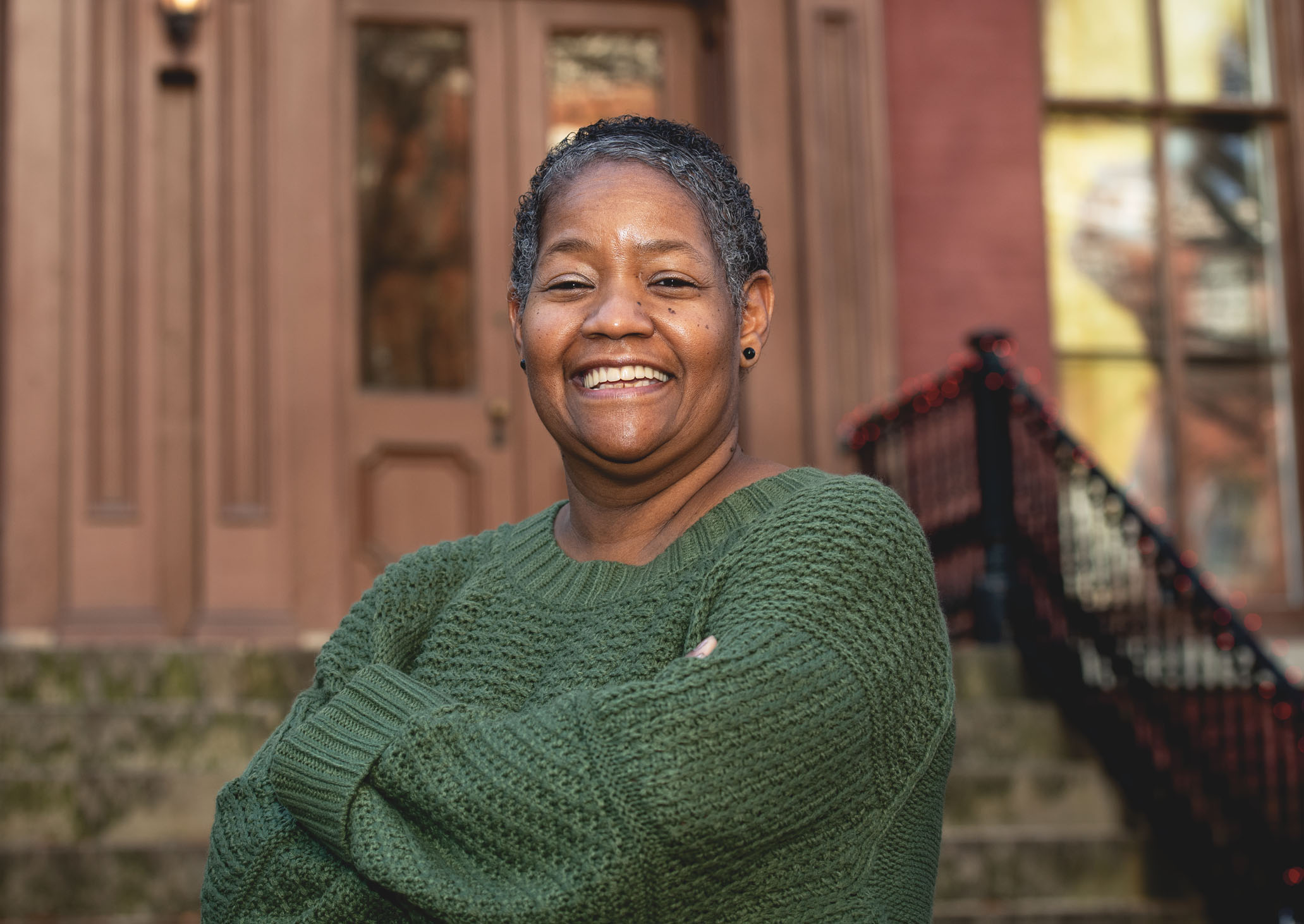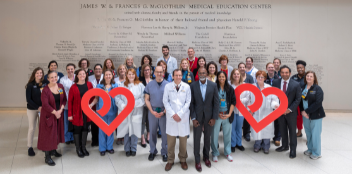How Michele survived a heart attack
Something alarming was going on inside Michele Williams-Poole’s body. One fateful morning she walked into work and her body, finally, screamed.

Something alarming was going on inside Michele Williams-Poole’s body. In summer 2019, the grandmother of five began feeling intense pressure and pain in her chest. Simple tasks, such as walking upstairs, left her out of breath. One fateful morning she walked into work and her body, finally, screamed.
“My left side hurt, my chest was pounding, my heart was racing, and I felt nauseated and dizzy,” she recalled.
Within an hour, the scary symptoms subsided. Though shaken, Williams-Poole downplayed the episode’s severity and brushed it off as indigestion — a decision she now regrets. “I should have gone straight to the emergency room,” she said.
At the urging of friends and family, she made an appointment to see Kenneth Ellenbogen, M.D., chair in cardiology and director of clinical cardiac electrophysiology and pacing at VCU Health Pauley Heart Center. Ellenbogen administered a series of cardiac tests, and Williams-Poole later returned for MRI testing. The test revealed a myocardial infarction, indicating she had experienced a mild heart attack within the previous weeks.
A cardiac catheterization revealed a considerable blockage. Barbara Lawson, M.D., an interventional cardiologist at Pauley, inserted cardiac stents to improve blood flow to Williams-Poole’s heart.
“It was only a matter of time before I had a massive heart attack,” said Williams-Poole, 57, who works in VCU Medical Center’s Department of Radiology. “If I hadn’t had the MRI that Dr. Ellenbogen ordered, the blockage would have progressed, and I probably would not be here today.”
With a triple-threat of pre-existing conditions — diabetes, high blood pressure and high cholesterol — Poole was predisposed to heart disease. Decades before she walked through the doors of Pauley, Virginia’s only nationally ranked heart program, doctors had warned she shared the same risk factors that caused her mother to have a heart attack at age 52. They urged diet and lifestyle modifications. “But I just didn’t pay attention,” said Williams-Poole.
“It was only a matter of time before I had a massive heart attack.”
Poor eating habits and a sedentary lifestyle are known contributors to coronary artery disease. Williams-Poole believes her heart attack was preventable. “I did this to myself,” she said matter-of-factly. “I was devastated, but I knew this was something that I had a hand in personally causing.”
Surviving a heart attack was the wake-up call she needed to implement the diet and lifestyle changes recommended to her all those years before. Changes that started with eating better. “Not a diet,” she emphasized. Her approach? Eating more healthy foods and vegetables, eating less fried food and sweet stuff. Cutting back on pasta and starches. Reducing portion sizes. Giving up her three-times-daily soda habit (a tough one).
And exercising as much as possible, including taking daily walks.
No surprise, her multipronged strategy — including medical treatment and lifestyle changes — has paid off. “I can walk upstairs now and not lose my breath like I did before,” she said. “I’ve lost weight. My blood pressure’s good. I feel a lot better.”
Williams-Poole’s new normal means she has more time to spend with her husband, daughters and granddaughters. The chance for a longer life is a gift she gives her family — and herself — every day.
It’s been nearly two years since her procedure. During that time, she continues taking her medication and follows up with her care team for yearly checkups. “I have yearly checkups that I’ll have to do. Basically, if I have a problem before then, they said just to call.”
According to Williams-Poole, those calls always result in excellent treatment that extends beyond her initial procedure. “The care is phenomenal,” she said. “I can contact them through the portal. If I need something, it’s done. Dr. Barbara Lawson did an excellent job with the procedure I had, and I had a follow-up with her, and she was just great.”
“I am grateful we identified Michele’s blockage when we did,” Ellenbogen said. “She has an inspiring story to tell.”
Back to Spring-2021

